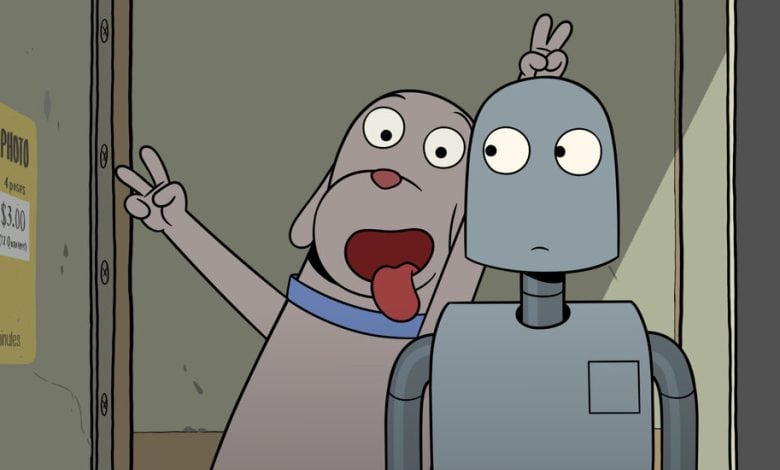‘Robot Dreams’ Review: A Friendship That Is Far From Mechanical

Decades after Philip K. Dick asked if androids dreamed of electric sheep, we have an answer. This android — one of two nameless leads in the Oscar-nominated charmer “Robot Dreams” — envisions a small, lonely dog in his third-floor walk-up, microwaving a depressing dinner for one. Set in 1980s Manhattan, Pablo Berger’s all-ages, wordless wonder of a cartoon kicks into gear when the mutt assembles a self-aware, spaghetti-limbed robot companion ordered from an infomercial. You might be thinking that sentient artificial intelligence didn’t exist 40 years ago, and you’d be right. But dogs don’t rent apartments, either.
This fanciful vision of New York is populated by animals: sporty ducks, punk rock monkeys, buffalo mail carriers, penguins shouldering boomboxes, and a disproportionate number of llamas. Mechanical beings are sparse and some creatures consider them lower in status, a brutal development when our robot’s relationship with his dog begins to break down. But Berger isn’t interested in science fiction. He’s made a buddy film that’s as relatable as two friends bonding over slices of pizza (but the robot eats the plate, too).
Berger, who also adapted the screenplay, expands Sara Varon’s short graphic novel of the same name into a minor epic. To describe the plot — a dog and a robot are best friends, until they aren’t — the film sounds pitifully small. But the world inside it feels huge, a sprawling landscape of joy and heartbreak and mixed emotions and stinging dead ends.
It’s hard to make out the dog and robot’s attachment. Is it platonic? Romantic? Does the dog consider himself the robot’s partner or his owner? The leads remain resolutely mute. In their silence, we fill their relationship with our own memories of loved ones, present and past: partners, best friends, siblings, even long-lost pets. The music steers the mood, a mix of Alfonso de Vilallonga’s jazzy score and a track by Earth, Wind & Fire that’s heard in endless permutations from the full original to a stripped-down, jaunty whistle, like that gag about a butcher who uses everything but the oink.
The film is structured as a series of vignettes. Some are designed to break your heart; others exist just because. In a low moment, the robot imagines himself taking the place of the Tin Man in “The Wizard of Oz,” which he and the dog rented on VHS from Kim’s Video. His dreamscape, however, squeezes the Empire State Building and the twin towers into Emerald City’s skyline, and on his yellow brick stroll there, he’s engulfed by giant, dancing flowers who stomp their stems at him in choreography that’s Busby Berkeley by way of Riverdance.
